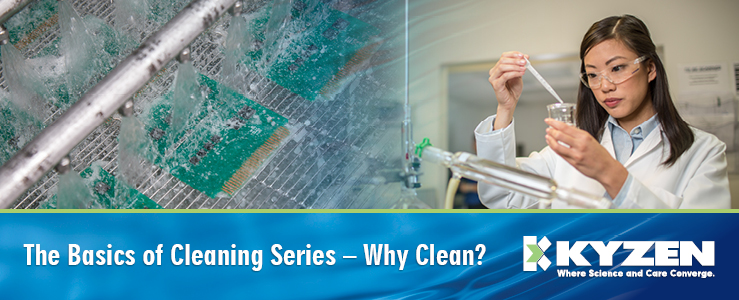Sponsored content by Kyzen

The Basics of Cleaning Series – Why Clean?
Why clean? In most manufacturing operations, cleaning is an afterthought or something done only when strictly necessary. Most people automatically think about PCB cleaning in electronics manufacturing, but cleaning in electronics assembly operations encompasses much more than just PCBs.
This article series titled “The Basics of Cleaning” will cover the basic aspects that any process engineer needs to cover when looking at a new or existing cleaning process.
Why clean? In most manufacturing operations, cleaning has been an afterthought or something that was done only when strictly necessary. However, in today’s electronics industry, technological progress is making cleaning a necessity on the manufacturing line, as the consequences of not cleaning or neglecting the cleaning process can have very costly outcomes, such as lower yields and field failures.
When talking about cleaning in electronics manufacturing, most people automatically think about PCB cleaning, but cleaning in electronics assembly operations encompasses much more than just PCBs. The following will discuss the main areas where cleaning can be important in the average electronics manufacturing operation:
- PCB Cleaning – Typically includes PCB, PCBA, Hybrids and Ceramics
- Stencil/Screen Cleaning – Most common processes are manual and automated cleaning of stencils and underside wipe of stencils in printers
- Maintenance Cleaning – The typical maintenance cleaning processes include manual, reflow and wave solder ovens, automated wave finger cleaning, cleaning of oven parts (filters, chains, etc.) and cleaning of solder pallets. P&P nozzles, adhesive dispensing needles and other equipment parts that need regular cleaning for maintenance purposes can also be included.
